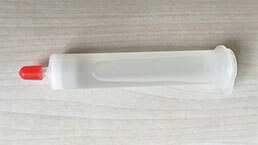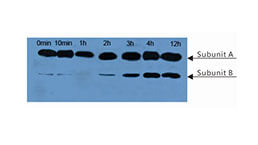FITC-Linked Polyclonal Antibody to Gamma-Aminobutyric Acid (gABA) 

4-Aminobutyric Acid
- UOM
- FOB US$ 205.00 US$ 478.00 US$ 683.00 US$ 1,708.00 US$ 6,830.00
- Quantity
Overview
Properties
- Product No.LAA900Ge81
- Organism SpeciesPan-species (General) Same name, Different species.
- ApplicationsWB; IHC; ICC; IF.If the antibody is used in flow cytometry, please check FCM antibodies.
Research use only - DownloadInstruction Manual
- CategorySignal transductionCardiovascular biologyNeuro scienceBone metabolism
- SourceAntibody labeling
- Ig Type IgG, Potency n/a
- PurificationAntigen-specific affinity chromatography followed by Protein A affinity chromatography
- LabelFITC
- Original Antibody PAA900Ge01-Polyclonal Antibody to Gamma-Aminobutyric Acid (gABA)
- Buffer FormulationPBS, pH7.4, containing 0.02% NaN3, 50% glycerol.
- TraitsLiquid, Concentration 500µg/mL
Sign into your account
Share a new citation as an author
Upload your experimental result
Review

Contact us
Please fill in the blank.
Specifity
The antibody is a rabbit polyclonal antibody raised against gABA. It has been selected for its ability to recognize gABA in immunohistochemical staining and western blotting.
Usage
Western blotting: 0.5-2ug/ml
Immunocytochemistry in formalin fixed cells: 5-20ug/ml
Immunohistochemistry in formalin fixed frozen section: 5-20ug/ml
Immunohistochemistry in paraffin section: 5-20ug/ml
Enzyme-linked Immunosorbent Assay: 0.05-2ug/ml
Optimal working dilutions must be determined by end user.
Storage
Store at 4°C for frequent use. Stored at -20°C in a manual defrost freezer for two year without detectable loss of activity. Avoid repeated freeze-thaw cycles.
Stability
The thermal stability is described by the loss rate. The loss rate was determined by accelerated thermal degradation test, that is, incubate the protein at 37°C for 48h, and no obvious degradation and precipitation were observed. The loss rate is less than 5% within the expiration date under appropriate storage condition.
Organism Species More: Pan-species (General)Giveaways
Increment services
Citations
- Effect of sub-acute exposure to acrylamide on GABAergic neurons and astrocytes in weaning rat cerebellumPubMed: 21444355
- Expression of the neuron-specific potassium chloride cotransporter KCC2 in adult rat cochlear.PubMed: 18577424
- Decreased Epidermal Growth Factor (EGF) Associated with HMGB1 and Increased Hyperactivity in Children with AutismPubMed: PMC3623607
- Correlation Between Hepatocyte Growth Factor (HGF) and Gamma-Aminobutyric Acid (GABA) Plasma Levels in Autistic ChildrenPubMed: PMC3694825
- Decreased Hepatocyte Growth Factor (HGF) and Gamma Aminobutyric Acid (GABA) in Individuals with Obsessive-Compulsive Disorder (OCD)PubMed: PMC3762604
- Renal Denervation Improves the Baroreflex and GABA System in Chronic Kidney Disease-induced Hypertensionpubmed:27917928
- Sex differences in the glutamate signaling pathway in juvenile ratsPubmed:28861894
- A novel homozygous mutation in GAD1 gene described in a schizophrenic patient impairs activity and dimerization of GAD67 enzymePubmed: 30341396
- Aucubin Alleviates Seizures Activity in Li-Pilocarpine-Induced Epileptic Mice: Involvement of Inhibition of Neuroinflammation and Regulation of NeurotransmissionPubmed: 30666488
- Differentiation of human glioblastoma U87 cells into cholinergic neuronPubmed: 30928478
- Glutamate Signaling Defects in Propionic Acid Orally Administered to Juvenile Rats as an Experimental Animal Model of Autism
- Effect of gamma radiation on combination therapy of certain antiepileptic drugs in rats.
- Antiepileptic effects of exogenous β‑hydroxybutyrate on kainic acid‑induced epilepsyPubmed: 33101467
- Dementia model mice exhibited improvements of neuropsychiatric symptoms as well as cognitive dysfunction with neural cell transplantation33828024
- Age-dependent neurological phenotypes in a mouse model of PRRT2-related diseases34101060
- Overexpression of wild-type human amyloid precursor protein alters GABAergic transmission34475508
- Adaptogenic potential of ginsenosides against domoic acid‐induced toxicity by regulating neuronal stress and kinate receptors: Ex vivo and in silico studiesPubmed:35102569







